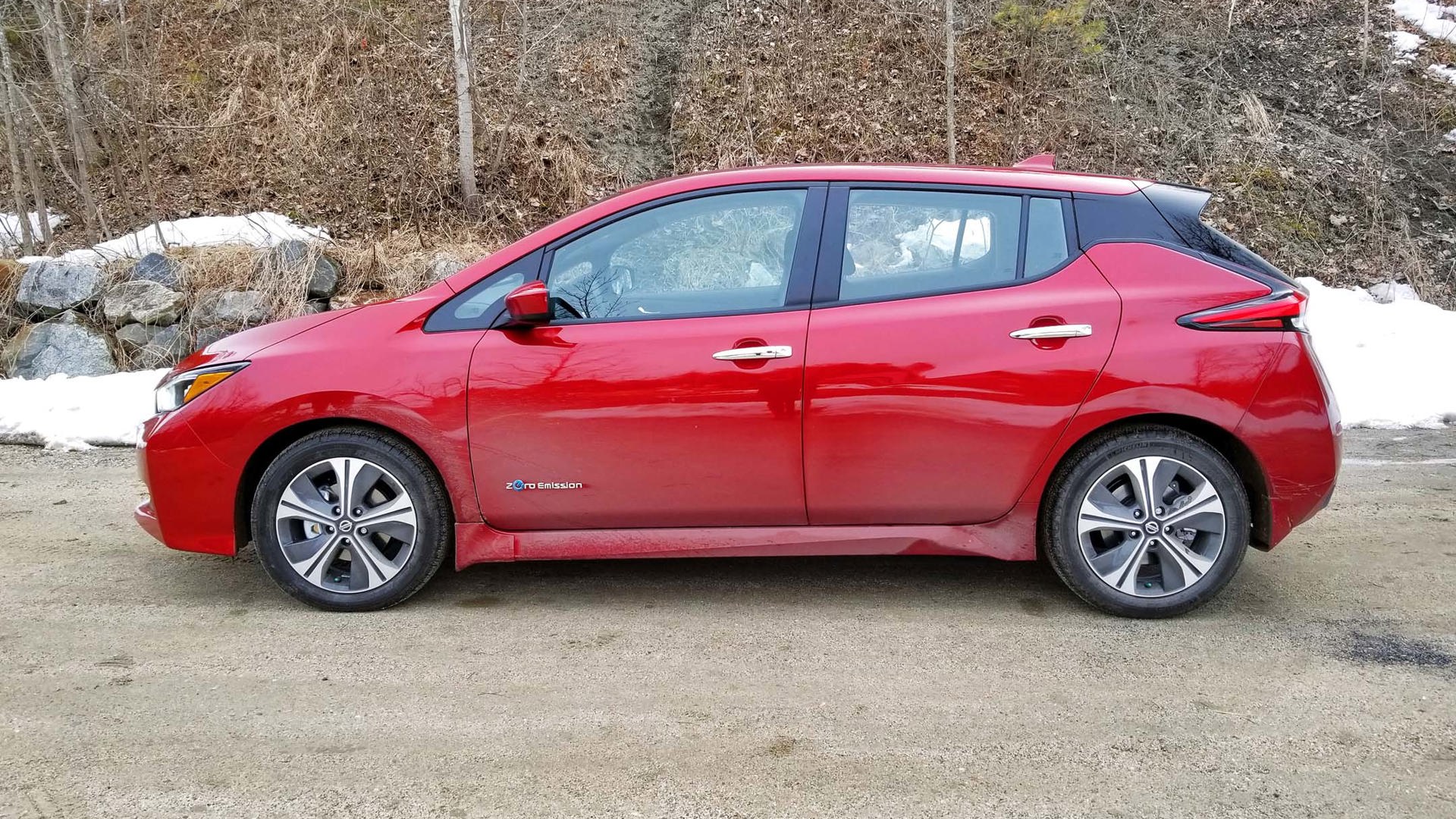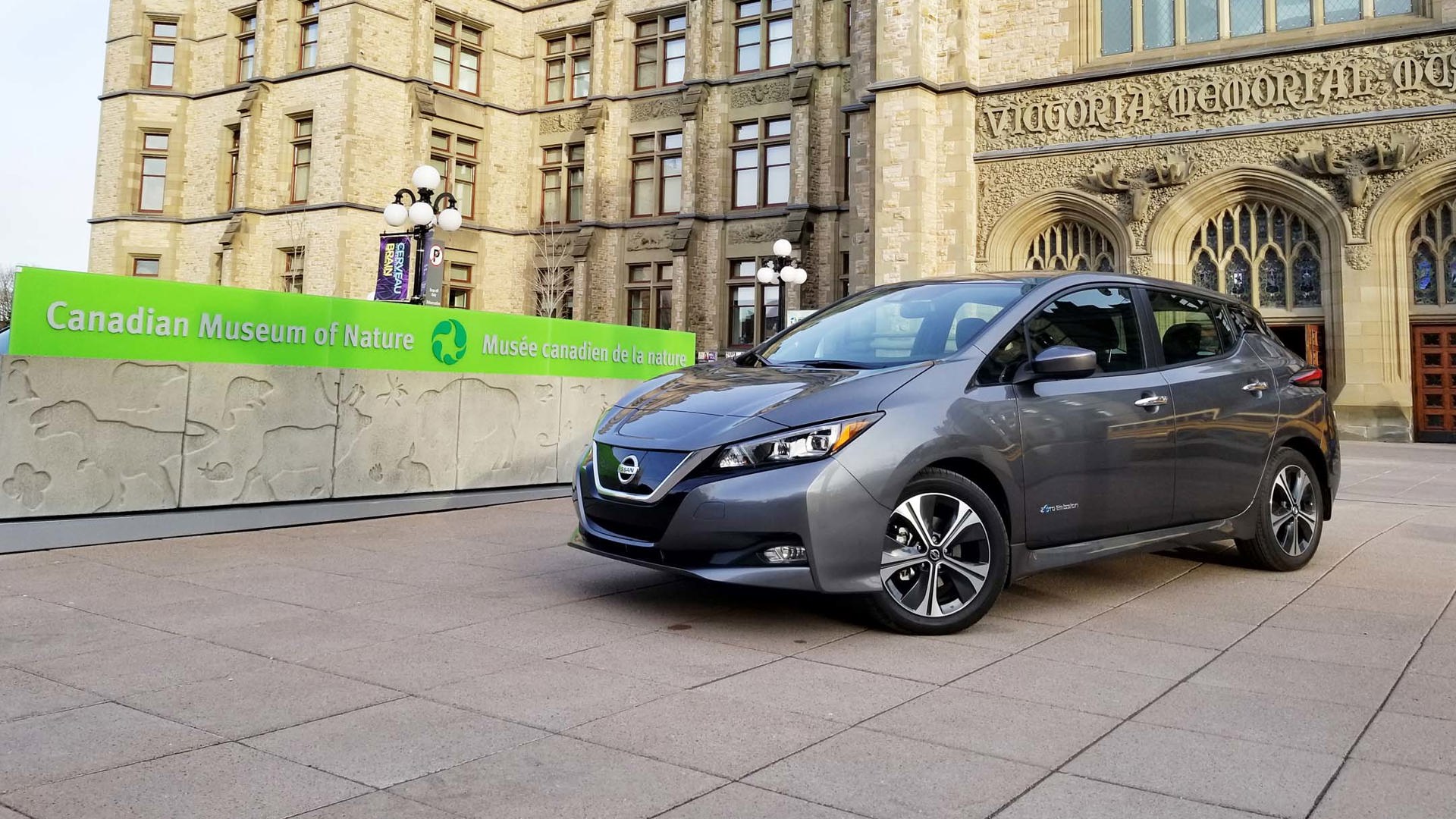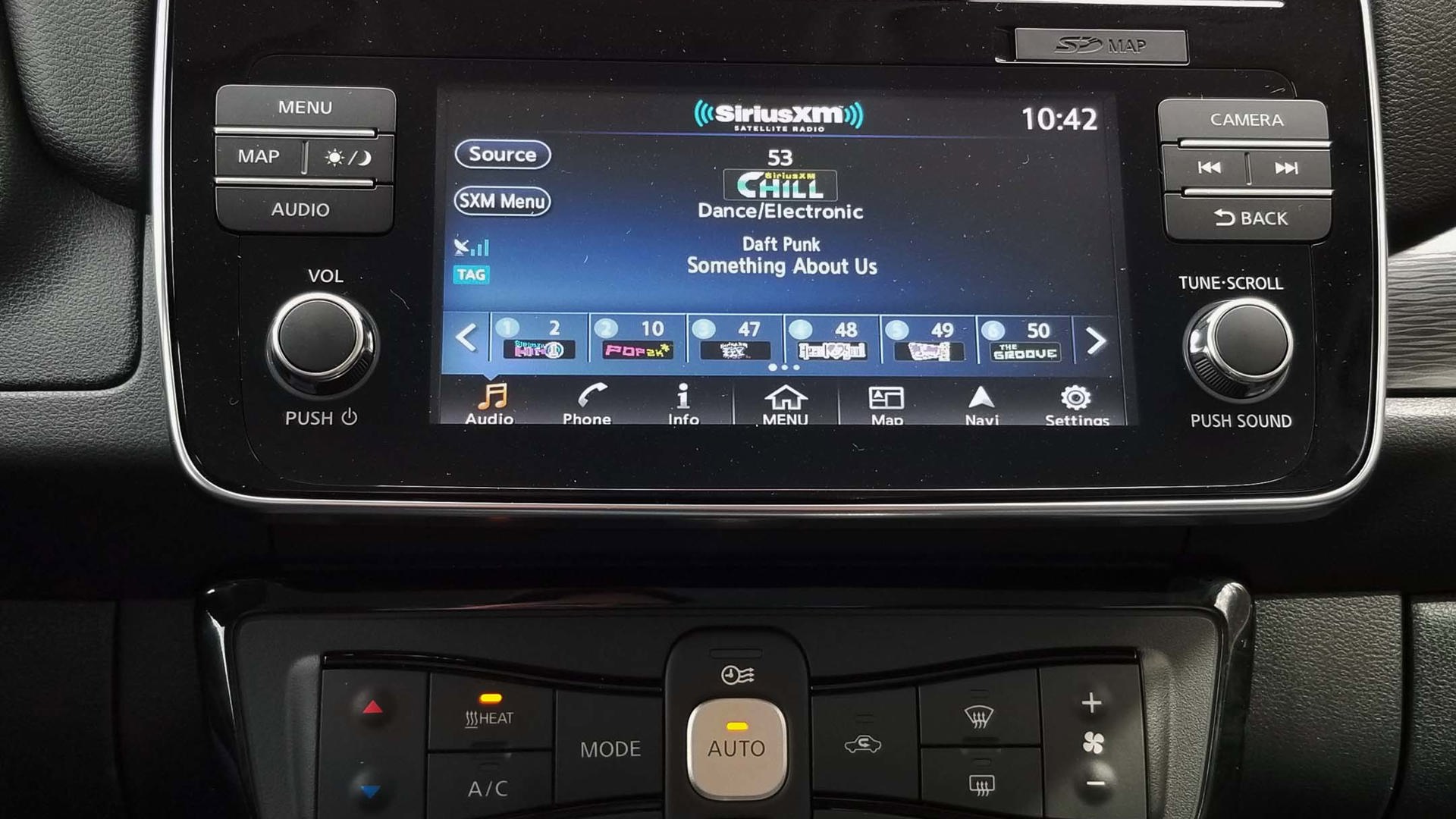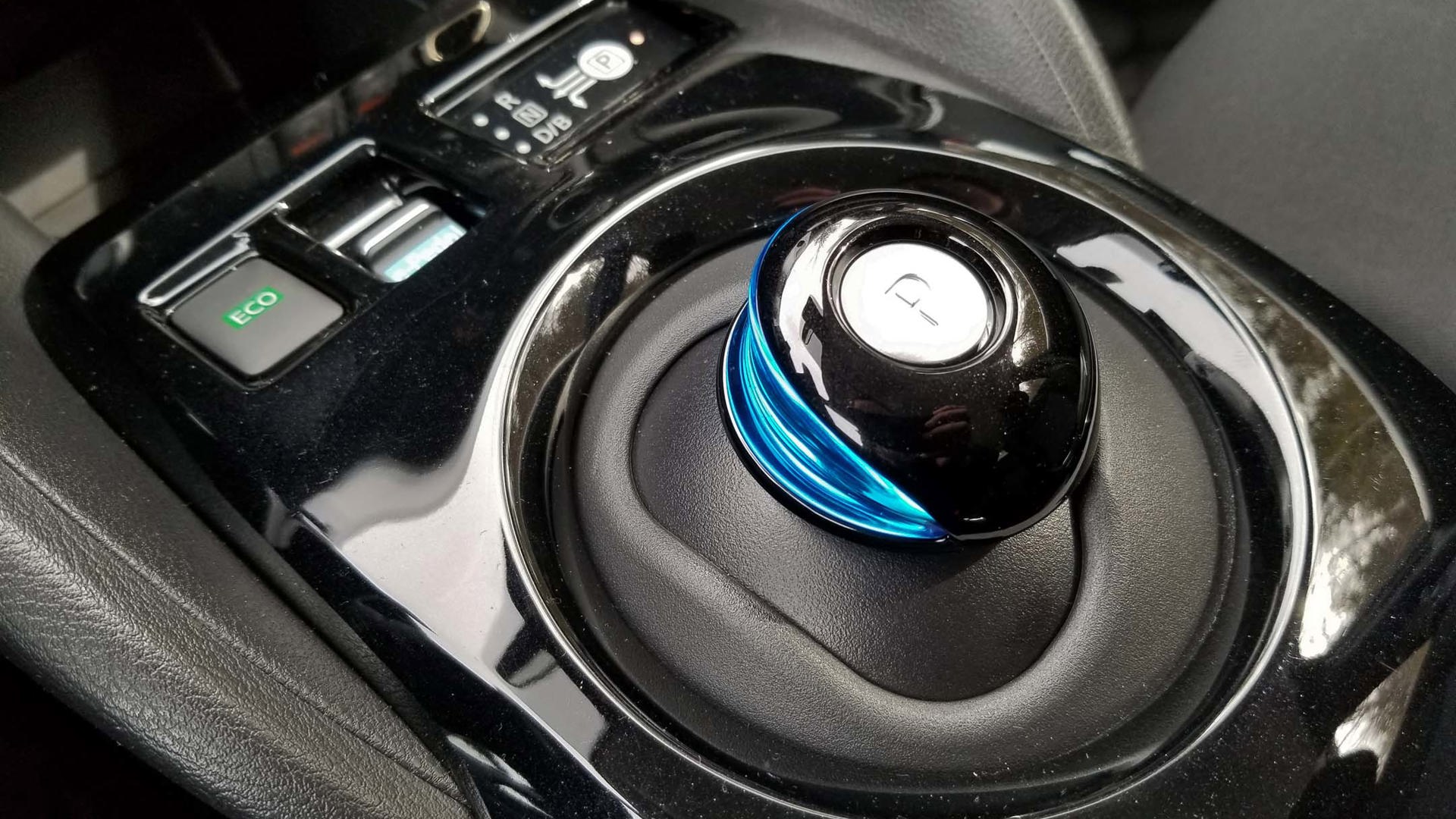The drive to convince Canadians to opt in for electric vehicles pushes ever forward. And based on early sales figures for the 2018 Nissan Leaf, it looks as promising as ever: Nissan fulfilled enough presales in the second-generation Leaf’s first two months on the market to match 11 percent of the car’s sales in its entire first generation, which has been on sale here since July 2011.
In homes where one spouse wants an affordable and efficient daily commuter and the other values driving enjoyment, this car will settle a lot of arguments.
Sure, percentages often look better on paper than actual numbers: that 11 percent adds up to about 670 units, so we’re not exactly talking success on the scale of the Rogue here. But any way you slice it, if both supply and demand maintain this pace, Canada could finally be on the verge of an electric revolution.
Is the new Leaf that much better than the original? Yes, unequivocally and exponentially. Is it better than its modern-day competition? Possibly, if value is your priority and you’re willing to make some compromises.
Is it ready for primary car status in Canadian driveways? Not quite yet. But as a viable and economical option for a fully electric second car – a role in which the Leaf has always shined brightest – it presents the most appealing proposition yet.
Power Unit
The 2018 Leaf is built on the same platform as the first generation, but applying some new efficiencies has allowed Nissan to work a significant boost in both range and power into the new model.
One of those comes in the battery pack. It contains the same 192 cells, but the walls are thinner, allowing the thickness of the cells themselves to increase by 0.9 mm each. This means that the new Leaf’s 40 kWh battery takes up the same footprint as the 24 kWh battery from the previous generation. The nickel–metal hydride composition has been replaced with a layered NMC layout (that’s lithium nickel manganese cobalt oxide for the chemistry buffs).
As a result, the new Leaf’s range jumps to a total of 242 km, up 70 km from the range of the previous generation’s peak-capacity 30 kWh battery.
However, the consequence of a larger battery is a longer charge time. At a Level 3 fast charger – the sort you’ll rely on for quick midway juice on longer drives – you’ll now get to a 65 percent charge in 30 minutes, and getting to 80 percent will take 40 minutes. At home using a 240-volt appliance outlet, or on the road at a Level 2 charger, it takes 7.5 hours to achieve a full charge from empty. If you’re stuck with a standard wall plug, you’re looking at a recharge time of upwards of 25 hours.
The need to install a Level 2 charger at home has been a barrier to adoption for plenty of drivers, and Nissan Canada is mitigating that somewhat by including a charging cable with every purchase that can plug into both a standard wall plug and an appliance plug. That means that if you already have a 240-volt outlet within 20 feet or so of where you park your car, then you won’t need any additional wiring or equipment to get started. Unfortunately, it’s not possible to buy additional cables at this stage, so you’ll need to gather it up and take it with you if you often charge in multiple locations.
As for transferring power from the battery to the wheels, the electric motor is unchanged in the second-generation Leaf, but a smaller and more optimized inverter – the portion of the power unit that converts the battery’s DC energy to the AC energy that the motor needs to run – works faster than the previous version, and the computer processing speed in the new Leaf has doubled.
The combination means that the power unit now produces 110 kW, 147 hp for an increase of 37 percent over the previous generation, and 236 lb-ft of torque for an increase of 26 percent – and, as is typical for an EV, most of that torque is available nearly instantly with a solid thump on the go pedal.
The difference this makes in the Leaf’s drive feel is remarkable. Being behind the wheel of a Leaf is no longer a sacrifice to be made in the name of living green; it’s responsive and peppy and genuinely decently fun under the right foot. It’s not exactly ’Ring ready, but in homes where one spouse wants an affordable and efficient daily commuter and the other values driving enjoyment, this car will settle a lot of arguments.
e-Pedal
Speaking of the right foot, the 2018 Leaf comes with a new drive mode called the e-Pedal, which is Nissan’s answer to one-pedal regenerative driving.
The shifter still includes D and B modes as with the previous generation, but there’s now a separate e-Pedal switch that overrides both when activated. Beside that, there’s a button for Eco mode that softens the throttle response for improved efficiency, no matter which mode you’re in. (It’s not just you – this does seem confusing, though it’s far more intuitive in real-life application.)
Using the e-Pedal, putting the throttle down creates acceleration as usual, but removing your foot activates regenerative braking that keeps working to a near-stop, when the friction brakes take over and stop the car completely with no action on the brake pedal required. Once you get used to the response times and stopping distances, this makes it possible to drive entirely using the accelerator while regenerating more power than in the past.
Modulating the throttle also creates some regeneration when, for example, rolling down hills but using the regenerative braking to maintain speed. Drivers can choose whether to have e-Pedal mode turn off automatically on power-down or remember its setting through restarts by using the on-board defaults menu.
I enjoy the intuitiveness of the e-Pedal in active driving, but there is room for improvement. Nissan prioritized drive feel over raw regenerative power here and tuned it to react relatively smoothly and gently. I still find myself more drawn to the Chevrolet push-button regenerative system because it’s more aggressive both in response and in how much power it pulls back – you can actively watch a Chevrolet Bolt regain charge with judicious use of regeneration in city driving, while I didn’t get the same sense of fulfillment from using the Leaf’s e-Pedal for the same purpose, nor did I find it nearly as easy to track how well I was doing at it.
The solution seems to be an easy one: offer two e-Pedal settings, one with the current gentler tuning and a second, much more aggressive mode for overachievers, ideally combined with a more detailed instrument cluster readout. Perhaps that’s a change that could be integrated in future updates.
About ProPILOT Assist
The new Leaf is available with Nissan’s ProPILOT Assist package, a product that the company has been hyping extensively. It’s a combination of two driver assistance technologies: adaptive cruise control – the terminology Nissan uses is intelligent cruise control – and lane centring.
There are few things you should know about this system before deciding whether it’s something you’ll use much.
First, there are several other automakers that offer these systems in tandem; Nissan happens to be one of very few that have given that tandem a name. Cadillac’s Super Cruise is another example. (That said, nearly all of the manufacturers that offer lane centring do so only in the luxury price range. It is a rare feature at Nissan’s price point.)
Second, this is emphatically not a hands-free system, nor is it intended to be autonomous in any way. There’s a torque sensor in the steering column that expects the driver’s hands to be on the wheel – and, by extension, the driver’s attention to be on the road – at all times. If you stop responding for long enough, a series of alarms will go off and the car will eventually stop completely in its lane under the assumption that you’ve fallen asleep or worse.
Third, it only works in ideal situations, where lane markings are very clear and the contrast between them and the asphalt is sufficiently stark. It doesn’t operate well when aimed straight into the sun, for example, and it’s automatically disabled when you need to use your wipers on anything faster than the intermittent setting.
However, once all of those caveats are applied, ProPILOT Assist is a useful system in reducing fatigue in traffic situations, particularly in combination with the e-Pedal. The car will come to a complete stop on its own and start up again – though if it’s stopped for more than three seconds, you’ll need to give the throttle a tap – and it will maintain its position in traffic with a minimum of ankle or wrist effort while recuperating energy. For that reason, it’s a far more effective system in the Leaf than it is anywhere else.
Design
Even with all of this technology included, the new Leaf’s greatest triumph may very well be in its exterior design. While the first generation was oddly bug-eyed and highly eccentric, the second generation integrates seamlessly into the Nissan lineup with its signature V-motion grille, floating roof line, and boomerang-shaped daytime running lights and brake lights, while subtle use of electric blue trim clearly marks it as an EV without being heavy-handed about it.
Nissan has also given some thought to ergonomics here: while plugging a charger into the previous Leaf required a bend of the knees, the new Leaf’s charging ports have been reconfigured to make them easier to connect with a line of sight from standing.
Unfortunately – for my body type, at least – those ergonomics don’t follow through into the interior. The seat is comfortable and offers good hip support, but the steering wheel doesn’t extend very far out at all, and with my short arms and legs I end up with my knees almost pressed against the dash paneling. The infotainment system integrates available Android Auto and Apple CarPlay (huzzah!), but the wide layout means that the tuning knob requires such a far reach for me that I need to lean toward it, which is a surprising problem to have in a car of small stature.
Both the infotainment screen and the instrument cluster feel smaller in this iteration and harder to glean at a glance. The quirky shifting knob is the same and there are plenty of blue accents, but otherwise the interior is entirely unremarkable. And it doesn’t seem any quieter in the new generation – plenty of road noise still makes its way into the cabin.
Dare I say it? I think I liked the old interior design better.
Trim Breakdown
The 2018 Nissan Leaf comes in three trim levels.
In the S base model, priced at $35,998 before provincial incentives (currently $14,000 for Ontario, $8,000 for Quebec, and $5,000 for British Columbia), e-Pedal mode is standard, as are 16-inch wheels and the included Level 1 and Level 2 charging cable and the Level 3 charging port. Heated front and rear seats, a heated steering wheel, and a battery heater are also included – because, as it turns out, it’s more efficient to heat your body with the electric seats and wheel than with blowing air – as are LED headlights and daytime running lights and keyless entry.
The mid-grade SV trim is already the top seller and integrates all of the key technologies. Priced at $39,598, it includes the same features as the S trim plus active cruise control and ProPILOT Assist, a 7-inch infotainment system touchscreen with navigation and EV telematics, Apple CarPlay and Android Auto functionality, SiriusXM satellite radio and traffic capability, and 17-inch alloy wheels.
The top-tier SL trim’s improvements are largely cosmetic. For $41,998, it includes leather seats with a power driver’s seat, around-view monitoring (as opposed to rear-view only in lower trims), a premium Bose seven-speaker audio system, heated outside mirrors with integrated turn signals, and the driver attention alert safety system.
The Verdict
With so many Canadian drivers being concerned with features such as all-wheel drive, ride height and quality, elevated seating position, sunroofs, and whisper-quiet interiors, it’s still going to be a while before EVs gain much traction as primary household vehicles.
However, between an expanding charging network, improved range, better driving dynamics, an included Level 2-capable charging cable, and outright affordability, the case for the new Nissan Leaf as a second commuter car is a very compelling one, particularly in Ontario where with provincial incentives a base model can be picked up for just a tick under $22,000.
Nissan Canada is also supporting the new Leaf’s battery with a stout eight-year, 160,000 km warranty against a capacity loss of below 9 out of its 12 bars.
With an election on the horizon and the looming possibility of an unsupportive Conservative government, interested Ontario buyers would be well-advised to take advantage of this generous incentive while they still can.
In fact, with voters heading to the polls on June 7 and dealer waiting lists already extending into that same month, it may already be too late.
Pricing: 2018 Nissan Leaf
(before provincial incentives)
S: $35,998
SV: $39,598
SL: $41,998









































